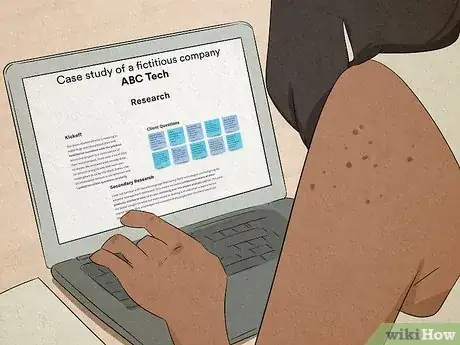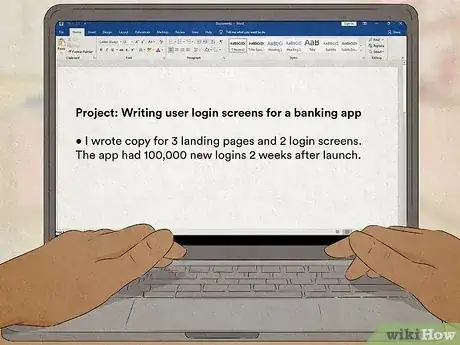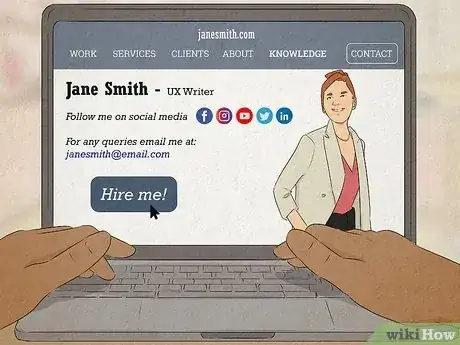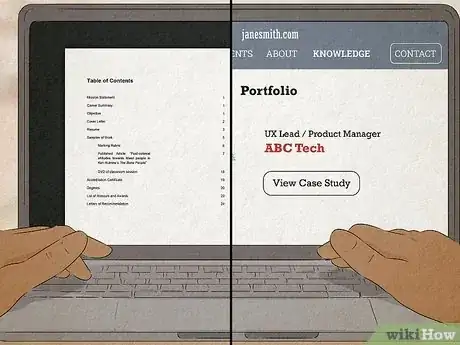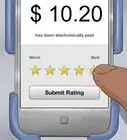This article was co-authored by Katherine Kirkinis, Ed.M., MA and by wikiHow staff writer, Dan Hickey. Katherine Kirkinis is a Career Coach and Psychotherapist who has served as a career expert for Forbes, Medium, Best Life, and Working Mother Magazine, and as a diversity and inclusion expert for ATTN and Quartz. She specializes in working with issues of career, identity, and indecision. She has doctoral-level training in career counseling and career assessment and has worked with hundreds of clients to make career decisions through career assessments. She is pursuing a doctoral degree at The University of Albany, SUNY where her work focuses on diversity and inclusion, racism in the workplace, and racial identity. She is a published author and has been featured in academic journals as well as popular media outlets. Her research has been presented at 10+ national APA conferences since 2013.
This article has been viewed 1,231 times.
A UX portfolio is a valuable asset in getting noticed by recruiters and employers, but how do you build one when you have no work experience? It turns out there are a variety of creative ways to work on UX projects and gather shareable material for your portfolio without having official, professional experience. We’ve put together a list of the best ways to build UX writing experience you’ll be proud to present, plus more tips on how to talk about your case studies and what other information to include in your portfolio. If you’re ready to put the X in UX, keep scrolling!
Things You Should Know
- Gain experience and portfolio-worthy projects through hackathons, freelancing, or spec work. Include non-UX writing samples, too.
- Highlight 3-5 impressive or unique case studies. Tell a compelling story about your role, the challenges you overcame, and your writing process.
- Include a personal statement, contact information, and testimonials if you can. Share your finished portfolio as a website or a PDF file.
Steps
Participate in a hackathon or UX writing challenge.
-
Compete to build UX material and connect with UX professionals. Hackathon competitions last 1-3 days and bring UX designers, writers, and developers together to design something new. Enter to generate portfolio material quickly and to network and learn from more experienced UX workers.[1] X Research source
- Search online for hackathons in your area that fit your experience level. Participants range from beginners through advanced designers.
Seek out freelance gigs or internships.
-
Build and hone your skills while getting work experience. Look for freelance work that tackles significant projects you can document in your portfolio. Make sure to clarify with your clients that you’re a beginner looking to build experience. If you’d prefer a slower paced learning environment, apply to internships in your area online or remotely.[2] X Research source
- Gradually, you’ll accumulate enough experience to successfully look for full-time work or build a freelance career.
Do spec work for existing brands or companies.
-
Practice rewriting microcopy for existing user experiences. Look for login buttons, push notifications, or other text that look clunky or awkward and improve it. Ask fellow UX writers for feedback to hone your skills and get used to working with different mediums and tones.[3] X Research source
- Demonstrate how you'd improve real life microcopy in your portfolio. It isn't paid work, but employers will see what you’re capable of.
- Describe your improvements respectfully (you never know if the person who wrote the original is looking at your work and process).
- Spec work (short for “speculative work”) is creative work done for free by volunteer designers in the hopes that a company or client will hire them.
Volunteer to do UX writing work for free.
-
Ask to help friends, startups, or nonprofits build websites or blogs. Reach out to organizations that don’t have a UX writer budget (or who don’t know what UX is) and explain how you can help them. This way, you can get experience on real projects and build connections with clients and companies that can vouch for your work.[4] X Research source
- Clarify that you’re planning to document your work for a portfolio and that you're a new professional looking for experience.
Take a UX writing course.
-
Find classes that let you work on real projects you can document. Online or community college classes are great ways to improve your skills, add training to your resume, and get tangible experience. Be sure to get feedback from professors and classmates, plus other writers, designers, or developers you encounter.[5] X Research source
- Taking courses online or at a local college helps you improve your resume and prepare for your career in the field.
- Your class might provide other online resources, like forums or Slack groups, where you can get feedback from other UX professionals.
- When soliciting feedback in class or online, make sure to courteously offer your own critiques for other people’s work too.
Write microcopy for a fictional company.
-
Make up a product, service, or company and create a brief to redesign. This will highlight your creativity and showcase your knack for problem-solving specific issues. For example, you could write notifications for an app that alerts you about rare bird sightings, or error messages for a fictional celebrity fan club website.[6] X Research source
- Since the product is fictitious, show off your graphic design experience by creating realistic items like loading pages or buttons.
Include non-UX writing samples too.
-
Show recruiters your natural writing skills in any form. Prepare other samples like social media posts, blogs, magazine articles—anything you have. Categorize your non-UX writing into editorial work and copywriting work, and stick to just a few samples. Give a brief overview of the context for your work.[7] X Research source
- Good writing is good writing, and employers want to see how your mind works and your ability to think outside the box.
- Many professional UX writers transition into their jobs from other writing fields.
Showcase 3 to 5 case studies.
-
Once you’ve gathered experience, highlight your absolute best work. Choose cases that are both impressive and highlight your strongest skill sets. Compare this section to a resume—employers don’t need to see every single job or case you’ve ever done, just the ones that are relevant or stand out.[8] X Research source
Know your portfolio audience.
-
Treat your portfolio like a UX project and design it for employers. Browse through UX writing job descriptions and highlight the skills and requirements that pop up the most in your portfolio. What are their priorities for hiring, and who are they looking for? If you’re applying for one specific company, research their tone and voice and tailor your writing and cases to that.[9] X Research source
- Consider if the company wants writers for apps, websites, or other platforms. Include and highlight the most relevant samples you have to market yourself toward the perspective job opportunity.
Tell stories about how you solved UX problems with writing.
-
Narrate how you discovered and solved problems in each case study. Use concise titles that identify the focus of projects (“Writing user login screens for a banking app”), then describe your role (“I wrote copy for 3 landing pages and 2 login screens”) and the quantitative outcome (“The app had 100,000 new logins 2 weeks after launch”).[10] X Research source
- Describe the goal and timeline of the project, plus the unique challenges or limitations you had to overcome to highlight your problem-solving skills.
- Narrate your writing process step by step so employers can understand the rationale behind your choices and tone.
- Optionally, include a few sentences about what you learned to showcase your commitment to professional growth and development.
Summarize your writing process.
-
Prove you’re an adaptable problem-solver by sharing your process. Show employers you know what steps to take to come up with answers. These steps might include discovering issues, researching solutions, strategizing and implementing your ideas, writing microcopy, and testing your ideas.[11] X Research source
- In addition to a general process section, include your process and the outcomes for specific case studies too.
Include a personal statement.
-
Write a paragraph or two about yourself and what your special skills are. Write a statement that highlights your soft skills, like working as part of a team or good interpersonal communication. Empathy is valuable as well—write about how you can understand users’ needs and work with your coworkers to accomplish goals.[12] X Research source
- Include some personal information that gives readers a sense of who you are and what you bring to a professional environment.
- List your hard skills or unique work experience too, especially if it’s in a related field like marketing or engineering.[13] X Research source
- Remember, hard skills (like how to use a specific software) are easy to teach new employees. Soft skills are just as valuable to employers.
List your contact information.
-
Make it easy for clients or hiring managers to reach out to you. Add as many ways to connect with you as you feel comfortable sharing—include your email address, phone number, and any professional social media accounts you have to start.[14] X Research source
- Supplement your contact information with online contact forms or creating an account on social networks for designers.
Include testimonials.
-
Ask previous employers or clients to write about your UX contributions. Testimonials aren’t a must-have, but they’re great to include if you have any past professional experience. A few sentences about your accomplishments and how easy it was to work with you will catch the eyes of potential employers.[15] X Research source
- Send a polite email asking for a few sentences describing their experience with you. Try to ask right after you finish a project they’re happy with.[16] X Research source
- Think of testimonials like online reviews. They should be relatively short (2 to 3 paragraphs at the most) and highlight the most important information.
Present your portfolio as a website or PDF file.
-
Websites and PDFs are the most popular ways to share your work. Design a website on a platform like Squarespace or Wix to get a personal domain name, hosting space, portfolio templates, and analytics information. Opt for a PDF to get a free, printable portfolio you can take to interviews.[17] X Research source
- The downside to website portfolios is the cost of a domain name, host, and content management system.
- The cons of PDFs include the time it takes to design a portfolio from scratch and the files size limitations most online job applications have.
Warnings
- Ask previous employers or clients if you can include work that was completed under an NDA (non-disclosure agreement) in your public portfolio.[18] X Research source⧼thumbs_response⧽
Other wikiHows

 How to Relieve & Prevent Headaches & Migraines Fast
How to Relieve & Prevent Headaches & Migraines Fast
 Best Ways to Unclog a Toilet
Best Ways to Unclog a Toilet
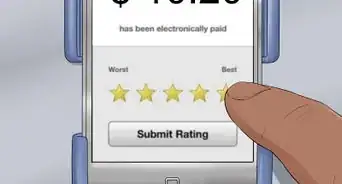
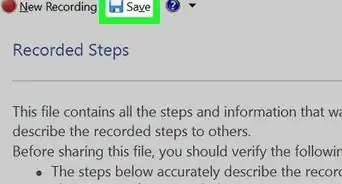 How to Take a Screenshot on a Windows PC: 8 Simple Tricks
How to Take a Screenshot on a Windows PC: 8 Simple Tricks
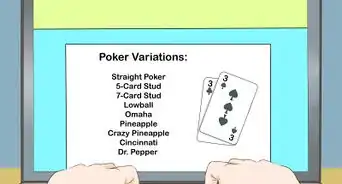
 How to Take Care of Potted Orchids
How to Take Care of Potted Orchids

References
- ↑ https://verticaltemplate.com/blogs/news/how-to-build-a-ux-writing-portfolio-without-ux-background-or-prior-experience
- ↑ https://verticaltemplate.com/blogs/news/how-to-build-a-ux-writing-portfolio-without-ux-background-or-prior-experience
- ↑ https://www.avoagency.com/articles/how-to-get-started-in-ux-writing
- ↑ https://verticaltemplate.com/blogs/news/how-to-build-a-ux-writing-portfolio-without-ux-background-or-prior-experience
- ↑ https://verticaltemplate.com/blogs/news/how-to-build-a-ux-writing-portfolio-without-ux-background-or-prior-experience
- ↑ https://verticaltemplate.com/blogs/news/how-to-build-a-ux-writing-portfolio-without-ux-background-or-prior-experience
- ↑ https://thekatcopy.com/build-a-ux-writing-portfolio/
- ↑ https://downthefunnel.com/how-to-build-a-ux-writing-portfolio/
- ↑ https://thekatcopy.com/build-a-ux-writing-portfolio/
- ↑ https://downthefunnel.com/how-to-build-a-ux-writing-portfolio/
- ↑ https://www.avoagency.com/articles/how-to-get-started-in-ux-writing
- ↑ https://downthefunnel.com/how-to-build-a-ux-writing-portfolio/
- ↑ https://www.avoagency.com/articles/how-to-get-started-in-ux-writing
- ↑ https://downthefunnel.com/how-to-build-a-ux-writing-portfolio/
- ↑ https://downthefunnel.com/how-to-build-a-ux-writing-portfolio/
- ↑ https://www.markbrinker.com/how-to-ask-for-a-testimonial
- ↑ https://downthefunnel.com/how-to-build-a-ux-writing-portfolio/
- ↑ https://thekatcopy.com/build-a-ux-writing-portfolio/
About This Article






